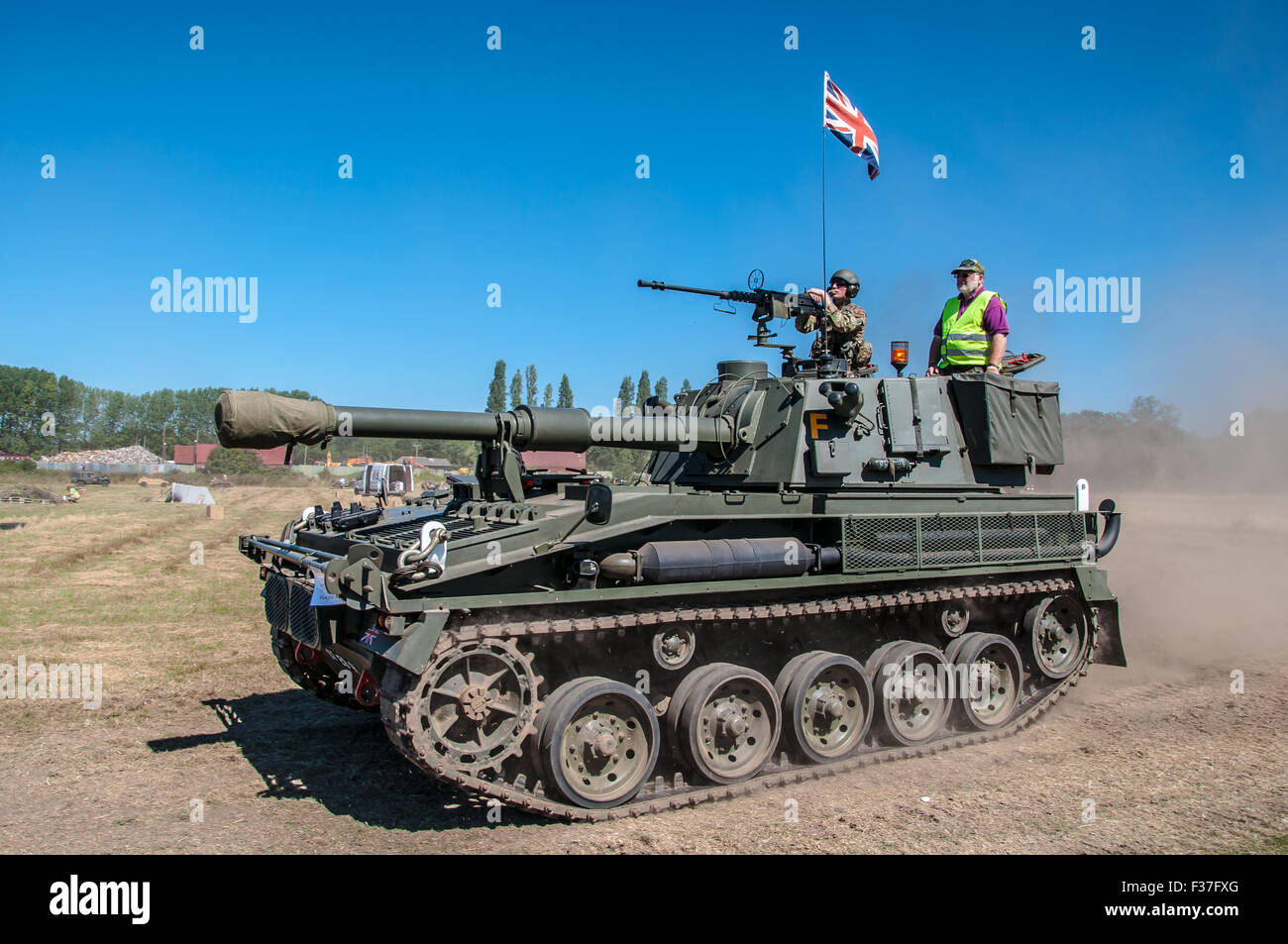Vickers Abbot self propelled gun. An ex-military vehicle in private hands being put through its paces for the public at Damyns Hall, Essex, UK

Image details
Contributor:
Avpics / Alamy Stock PhotoImage ID:
F37FXGFile size:
54.6 MB (2 MB Compressed download)Releases:
Model - no | Property - noDo I need a release?Dimensions:
5360 x 3560 px | 45.4 x 30.1 cm | 17.9 x 11.9 inches | 300dpiDate taken:
9 August 2015Location:
Damyns Hall, Essex, UKMore information:
FV433 Field Artillery, Self-Propelled "Abbot" is the self-propelled artillery variant of the British Army FV430 series of armoured fighting vehicles, using much of the chassis of the FV430 but with a fully rotating turret at the rear housing the 105 mm gun and given the vehicle designation of FV433. Its correct designation was "Gun Equipment 105mm L109 (Abbot)"; L109 was little used, probably to avoid confusion with 155 mm M109 that entered UK service at about the same time. The name "Abbot" continued the Second World War style of naming self-propelled artillery after ecclesiastical titles. The FV433 used a different configuration of power pack from other vehicles in the FV430 series. Maximum range with 105 mm Fd Mk 1 ammunition was 15 km, the Mk 2 gave 17.4 km. Maximum rate of fire was 6–8 rounds per minute. The gun was able to elevate to 70 degrees and depress to -5 degrees, sufficient to engage enemy AFVs if necessary. Traverse and shell ramming were powered by electrical servo mechanisms, elevation and cartridge ramming were by hand. Due to the number of charges and its compact turret the Abbot did not have calibrating sights. Instead the sight mount had both Tangent Elevation (TE) and Angle of Sight Scales and a separate Gun Rule to convert range into TE, corrected for the muzzle velocity variation from standard. The dial sight had all scales internal, illuminated and viewed through a single eyepiece. The Abbot was able to swim across water, having a flotation screen fixed around the hull which was raised to provide buoyancy. The action of the tracks was sufficient to drive it forward at about 3 knots (see also DD Tank). Each Abbot was supported by a fully amphibious Stalwart Mk 2 High Mobility Load Carrier that carried additional ammunition. The Abbot was replaced by the AS-90 self-propelled gun in the mid 1990s. It is still in service with the Indian Army though they are looking for a replacement.